
Watch The Video On YouTube
The Professor reviews the EcoFlow River 2 PRO portable LFP lithium battery power station solar generator and discovers significant improvements.
WATCH IT HERE
Intro:
-
Last fall I reviewed two of the new Ecoflow River 2 series power stations but the largest model the “Pro” wasn’t yet ready for prime time. This product has now hit the virtual retail shelves and it’s time to see, is it any good? Let’s find out!
Features:
-
For clarification, the River 2 series consists of 3 different products. The base 256wh River 2, the 512wh River 2 Max, and the 768wh River 2 Pro. Since I’ve already reviewed the smallest two models we’re solely focusing on the Pro version today.
-
Battery Capacity/Tech/Cycles: The River 2 Pro sports a 768wh LiFePO4 battery rated 3000 cycles to 80% capacity
-
Size/Weight: Approximately 11×10x9 inches @17lb
-
Design/Display: Has a basic black and white LCD display that shows input/output watts, battery % with icon, and time to charge/discharge
-
Inverter Size/Type (constant/peak) and #outlets: The Pro sports an 800w pure sine inverter with 4 outlets and offers Ecoflow’s proprietary X-Boost feature that allows you to run some appliances up to twice the rated wattage of the inverter. It does this by dropping the voltage to allow higher amps. It is not recommended to use this feature on appliances that are computerized, run a high draw electric motor, or a compressor. Fortunately, X-Boost can be easy disabled within the app.
-
Ways To Charge (and times for each): This unit offers 4 ways to charge. AC charging at up to 940w claims to top up the Pro from dead to full in just over an hour. The Pro supports up to 220w of solar from 11-50v and will charge this model under perfect conditions in about 4 hours. 100w max of 12v car charging means zero to full in about 8 hours . Last but not least, you can charge the Pro via 100w USB-C PD charging. This too will take about 8 hours from empty. Note that both the AC charging and 12v car charging maximum speeds are selectable within the app.
-
12v Output Types: The Pro version offers a 10A vehicle accessory socket along with a pair of 5521 barrel plug outputs rated 3A each with all outputs regulated at 12.6v. The max output for all 3 combined is 126w.
-
USB Output Types: The Pro sports 3 standard USB ports good for charging up your dinosaurs and a single 100w bidirectional USB-C PD port.
-
Other Features: All River 2 series supports the EcoFlow app for remote access which allows the user to adjust charge rates, timeouts, and enable or disable the X-Boost feature. I’ve covered this app in detail many times in the past. Here’s a quick peek.
-
Warranty: Ecoflow offers a class leading 5 year warranty across the board on all River 2 series products.
Testing:
-
DC Battery Capacity Test (time lapse): This unit scored 670wh/768 for an impressive 87%
-
AC Battery Capacity Test (time lapse): We were able to pull 640wh/768 for a respectable 83%
-
So I’m pretty blown away by these numbers because both the River 2 and River 2 max scored quite poorly on both of these tests with results in the low 70th percentile. We’re seeing a 10-15 point increase in the Pro probably due to 6 months of firmware updates. The River 2 and River 2 Max were first production models and I even said in that review there was a possibility that Ecoflow would fix the capacity issue via firmware and it certainly seems they have. Kudos Ecoflow!
-
Sine wave check under load: 119v/60hz @600w
-
Inverter capacity test (max): 1000w <5s
-
Cooling ability test (rated @ 5mins): 830w pass
-
Inverter fan noise db: 46
-
Max Charge Rate @ watts/volts: AC 900w, DC 12v 96w, 19v 150w, Max 50v 218w
-
Charging fan noise db: 45
-
Simultaneous charging ability: none
-
Pass thru / UPS: UPS passes laptop test. Measured @15ms
-
DC Output(s) Max Rate: 10A
-
12v output(s) regulated: 12.6v
-
USB output rate check: 100w pass
-
Amp interference test: fail
What do I think about it? :
-
We’ve seen massive improvements in both battery capacity and fan noise in the current Pro model. Unlike the River 2 Max in my previous review, the Pro model passed the UPS laptop test with flying colors and with a real world measured 15ms switchover time – and to all the haters it was done without the battery being full. It’s much better than the 30ms “EPS” Ecoflow claims. You can legitimately use it as a low latency UPS to keep a computer online regardless of the stability of the grid power coming in.
-
With the Pro there’s not much to gripe about feature wise except the lack of USB quick charge ports and no wireless charging pad. These are things you’d expect on the top of the range model. They wasted no expense on a SOS flashlight so no flagging down our little buddies upstairs. It is a minor bummer that the Pro fails the amp interference test and doesn’t support any kind of simultaneous charging. I hoped to see improvements there for something they are calling a “Pro version”.
-
Let’s get something straight. Ecoflow isn’t an entry level brand. You can find models around this size all day long on Amazon, for hundreds less from fly by night brands you can’t pronounce. However, there is serious bang for the buck here since the Pro offers a 10 year battery that charges crazy fast with a 5 year warranty at a reasonable price. Ecoflow also seems to have the least complaints of the “big three” when it comes to customer service.
Pricing and competition
-
Product Price with current discounts:
-
The retail price for the 800w River 2 Pro is $599 but of course I have an exclusive discount code that will knock off a chunk of change for viewers of the channel. The link and code are below.
-
-
Who’s It Aimed At? (market focus):
-
These small sogens are meant mostly for portable power while camping or to supply power to small devices like laptops or televisions during a blackout or at a location without power. These are not meant to run residential refrigerators, air conditioners, or heaters although the Pro can handle those for a limited time if they are smaller appliances. The Pro should have no problem handling most personal computers, TV’s, and other midrange appliances under 800w. Certain appliances over 800w such as coffee machines and hot plates can also be run if you activate the X-Boost feature, but use it at your own risk.
-
-
Recommended Solar Panel Type/Size:
-
The Pro supports up to 220w of solar. Your best bet since these are portable products is to get the appropriate Ecoflow folding solar panel to match. The 220w bi-facial is a fantastic, if pricey, choice. You can use 3rd party panels but be aware that none of the River 2 series includes a MC4 to XT60 adapter. I do have those available on hobotech.tv/amazon under solar adapters. If you want to check out other less expensive options for solar panels you can click on “solar kits” on the same site to see what I have there.
-
-
If you’re interested, use this link and code EFHOBOTECH8 at checkout for the best price online!
EcoFlow River 2 Pro
800w UPS Generator
Use code EFHOBOTECH8
GO TO ECOFLOW
Jackery 3000 Pro
3000w UPS Generator
Use code HOBOTECH2023
GO TO JACKERY
Growatt Vita 550
600w Solar Generator
Use code OLHOBOFANS
GO TO GROWATT
Growatt Infinity 1500
2000w Solar Generator
Use code HOBOSFANS
GO TO GROWATT
Bluetti PV420 420w
Portable Solar Panel
Use code HOBOPV420
GO TO BLUETTI
Dr. Prepare 100ah
LiFePO4 PowerMax Battery
Use code HOBO7
GO TO DR PREPARE
Power Queen 190ah
LiFePO4 Drop In Battery
Use code HOBO9 for $605 offer
GO TO POWER QUEEN
Vigorpool Captain 1200
UPS LFP Parallel SoGen
GO TO VIGORPOOL
ZENDURE SBP 2000
SOLAR GENERATOR
$100 OFF code HOBOSBP
GO TO ZENDURE
BLUETTI EB3A UPS
SOLAR GENERATOR
Use code HOBOEB3A
GO TO BLUETTI
RUNHOOD POWER
MODULAR GENERATOR
GO TO RUNHOOD
ECOFLOW WAVE
BATTERY POWERED A/C
Use code HOBOTECHWAVE
GO TO ECOFLOW
RENOGY LYCAN 5000
4800wh UPS Waterproof
Solar Generator
12% off with code HOBOLYCAN1
GO TO RENOGY
—
GOT RENOGY SOLAR PANELS?
Renogy 450w solar panels: https://hobos.cc/ren450
Renogy 175w solar panels: https://hobos.cc/ren175
Use code HOBOPANEL for 10% off
ACOPOWER
LiON Mini Fridge
$226 Super Early Bird!
GO TO ACOPOWER
BougeRV 1200w
1100wh SoGen
$719 code HOBOTECH10
GO TO BOUGERV
Jackery 2000 Pro
2200w UPS SoGen
$2069 code HOBOTECH
GO TO JACKERY
ICECO JPPRO 12v Fridge
Only $479 for a limited time!
GO TO ICECO PAGE
PECRON E3000 3108wh
Only $1899 for a limited time!
Use code HOBOE3000 until May 7th
GO TO PECRON SITE
BIGBLUE CELLPOWA 2500w
Only $1099 for a limited time!
GO TO BIGBLUE SITE
BLUETTI EP500 PRO
See the review?
GO TO BLUETTI POWER SITE
//-AC300 & B300 Deals-//
B300 (solo) Use code HOBOB300 https://bit.ly/3hyROWi
AC300+B300 Use code HOBOAC3001B https://bit.ly/398DDm1
AC300+2xB300 Use code HOBOAC3002B https://bit.ly/3Aq3OAs
AC300+2xB300+3xPV200 Use code HOBOAC300COMBO2 https://bit.ly/3tJHFuD
2xAC300+2xB300+P030A Use code HOBOAC300COMBO1 https://bit.ly/3lpWoXU
AC300+4xB300 Use code HOBOAC3004B https://bit.ly/3tVd1Pb
2xAC300+4xB300+P030A Use code HOBOAC300COMBO3 https://bit.ly/2Xmd8XL
2xAC300+4xB300+6xPV200+P030A Use code HOBOAC300COMBO4 https://bit.ly/2XmDDfp
//-AC200Max & B230 Deals-//
B230 (solo) Use code HOBOB230 https://bit.ly/3EiO4Sk
AC200MAX Use code HOBO200MAX https://bit.ly/3EiOBni
AC200Max+B230 Use code HOBOMAXB230 https://bit.ly/3znZzEB
AC200Max+3PV200 Use code HOBOMAX3PV2000 https://bit.ly/39b8lLs
AC200Max+2*B230 Use code HOBOMAX2B230 https://bit.ly/3k9D7ue
AC200Max+2*B230+3*PV200 Use code HOBOMAXCOMBO https://bit.ly/3kb2A6w
//-AC200P-//
AC200P Use code HOBO200P https://bit.ly/3JSgGDR
AC200P+3xPV120 Use code AC200PV120 https://bit.ly/3555Yes
AC200P+3xPV200 Use code AC200PV200 https://bit.ly/3t9pPBg
//-UNDER 1000w-//
AC50S Use code HOBO50 (or HOBO50OR) https://bit.ly/3skt7me
EB55 Use code HOBO55 https://bit.ly/3hfqw6x
EB70S Use code HOBO70S Use code HOBO100 https://bit.ly/3C311iF
EB150 Use code HOBO150 https://bit.ly/3pgyr85
EB240 Use code HOBO3000 https://bit.ly/3Ka7drZ
EB55+PV120 Use code PVEB55 https://bit.ly/3BMIpDn
EB70S+PV200 Use code EB70S30 https://bit.ly/3sfYu1c
EB150+2xPV120 Use code EB150PV120 https://bit.ly/3t7PmuM
EB240+2xPV120 https://bit.ly/33OMk61
//-SOLAR PANELS-//
PV120 Use code HOBO100 https://bit.ly/3LZXAO3
PV200 Use code HOBO200 https://bit.ly/3vgmjrq
PV350 Use code HOB350 https://bit.ly/3hIr1Gs
//-ACCESSORIES-//
DC Charging Enhanncer(D050S) Use code HOBOENHANCER https://bit.ly/2Xs3mnd
Fusion Box Pro(P030A)Use code HOBOFUSION https://bit.ly/3AcUQqs
PV voltage step down module(D300S) Use code HOBOD300S https://bit.ly/3nByuv1
D050S+3*PV200+B230 Use code HOBOENHCOMBO1 https://bit.ly/3nzNKJ9
D050S+3*PV200+B300 Use code HOBOENHCOMBO2 https://bit.ly/2XhAuh1
–ALLPOWERS MONSTER PRO–
5000wh UPS LFP SOGEN
Only $3399 for a limited time!
That’s 67 cents per watt hour! Cheap!
GO TO ALLPOWERS SITE
OUPES 1200w Solar Generator
Only $765 for a limited time!
Use Code HOBOTECH for 15% off SITE WIDE
GO TO OUPES SITE
GET THE BLUETTI AC200P at the LOWEST PRICE EVER!
BLUETTI AC200P 2000wh LiFePO4
Only $1498 from BLUETTI
https://bit.ly/2T3xMJK
Use Code HOBO200P
or purchase from Amazon + tax support & Bezos Yacht Fund
PLEASE SUPPORT US BY BUYING DIRECT FROM BLUETTI
BEZOS DOESN’T NEED ANOTHER YACHT!
MONTEK X-1000 Water Resistant 1000w SoGen
MONTEK X-1000 (with 80w panel): http://shrsl.com/3cm8o use code HOBO1000 for $100 off!
ACOPower LiONCooler Pro Solar Fridge
https://bit.ly/3Dp5hYH
ANKER 521 256wh LFP Power Station
https://amzn.to/3nZUT51
BLUETTI AC300
3000w Solar Generator
“BEST SOGEN AVAILABLE IN 2021!”
ON SALE NOW!
Use the codes / links below!
//-AC300 & B300 Deals-//
B300 (solo) Use code HOBOB300 https://bit.ly/3hyROWi
AC300+B300 (review bundle) Use code HOBOAC3001B https://bit.ly/398DDm1
AC300+2xB300 Use code HOBOAC3002B https://bit.ly/3Aq3OAs
AC300+2xB300+3xPV200 Use code HOBOAC300COMBO2 https://bit.ly/3tJHFuD
2xAC300+2xB300+P030A Use code HOBOAC300COMBO1 https://bit.ly/3lpWoXU
AC300+4xB300 Use code HOBOAC3004B https://bit.ly/3tVd1Pb
2xAC300+4xB300+P030A Use code HOBOAC300COMBO3 https://bit.ly/2Xmd8XL
2xAC300+4xB300+6xPV200+P030A Use code HOBOAC300COMBO4 https://bit.ly/2XmDDfp
//-AC200Max & B230 Deals-//
B230 (solo) Use code HOBOB230 https://bit.ly/3EiO4Sk
AC200MAX Use code HOBO200MAX https://bit.ly/3EiOBni
AC200Max+B230 Use code HOBOMAXB230 https://bit.ly/3znZzEB
AC200Max+3PV200 Use code HOBOMAX3PV2000 https://bit.ly/39b8lLs
AC200Max+2*B230 (review bundle) Use code HOBOMAX2B230 https://bit.ly/3k9D7ue
AC200Max+2*B230+3*PV200 Use code HOBOMAXCOMBO https://bit.ly/3kb2A6w
//-Other Models-//
AC200P 2000wh https://bit.ly/2T3xMJK use code HOBO200P
EB70 700w LiFePO4 https://bit.ly/2SfeEIK use code HOBO70
EB55 700w LiFePO4 https://bit.ly/3CmRHFq use code HOBO55
AC50s 500wh https://bit.ly/3uNec1O use code HOBO50
AC50s (orange) https://bit.ly/2T1TUEx use code HOBO50OR
EB240 2400wh https://bit.ly/3cjMseB use code HOBO3000
EB150 1500wh https://bit.ly/3plw3vL use code HOBO150
//-Solar Panels-//
BLUETTI PV200 200w Solar Panel https://bit.ly/31b1n8o use code HOBO200
BLUETTI PV120 120w Solar Panel https://bit.ly/3Emrtn8 use code HOBO100
//-Accessory Deals-//
DC Charging Enhanncer(D050S) Use code HOBOENHANCER https://bit.ly/2Xs3mnd
Fusion Box Pro(P030A) Use code HOBOFUSION https://bit.ly/3AcUQqs
PV voltage step down module(D300S) Use code HOBOD300S https://bit.ly/3nByuv1
D050S+3*PV200+B230 Use code HOBOENHCOMBO1 https://bit.ly/3nzNKJ9
D050S+3*PV200+B300 Use code HOBOENHCOMBO2 https://bit.ly/2XhAuh1
HIBOOST BOOSTERS!
-> https://bit.ly/3DLf0Kn <-
Use code HOBO20 for 20% off the OTW, RV, and Car boosters.
Use code HOBO15ALL for 15% off everything else SITE WIDE! (including home boosters!)
NEW BLUETTI AC200Max !
AC200Max: use code HOBO200MAX https://bit.ly/3mjdKIa
AC200Max+B230: use code HOBOMAXB230 https://bit.ly/3xZJCUg
AC200Max+2*B230: use code HOBOMAX2B230 https://bit.ly/3z3L8Gh
AC200Max+2*B230+600w solar: use code HOBOMAXCOMBO https://bit.ly/3D1SEUr
AC200Max+600w solar: use code HOBOMAX3PV2000 https://bit.ly/2WbTMnS
BROWSE OTHER DEALS: https://bit.ly/3ydwhId
SUNGOLDPOWER 130w v.2 Suitcase Kit
is BACK !
Use code HOBOTECH at checkout
GET IT AT SUNGOLDPOWER
Watch the original V.1 review video HERE
Amazon (no discount): https://amzn.to/3iJFRht
JACKERY EXPLORER 1000
GET IT AT JACKERY (save tax)
use code HOBOTECH at checkout!
Amazon: https://amzn.to/38TEJiR
CANADA https://amzn.to/3d7ll5g
PLEASE SUPPORT US AND NOT BILLIONAIRES BY BUYING DIRECT!
ECOFLOW DELTA PRO
3600w LiFePO4 UPS Power Station
CHECK IT OUT HERE
ICECO Refrigerators
->CLICK HERE for BEST DEALS!<-Use code HOBOTECH at checkout!
BOUGERV DEALS!
BOUGERV 180w Solar Panels
Use code HOBOTECH at checkout for 12% off the ENTIRE Solar Catalog!
Get BOUGERV 180 WATT SOLAR PANELS HERE
BougeRV Cheap REFRIGERATORS!
Use code HOBOTECH20 for 20% off all models!
53qt use code HOBOTECH90 for $90 off!
BUY DIRECT FROM BOUGERV
Wanna buy Bezos another Yacht instead?
53qt (Canada) https://amzn.to/332dgeX use code V7DIVCAB
The 5100wh Home Backup BEAST!
BLUETTI EP500 / EP500 PRO
GET IT NOW
JACKERY EXPLORER 1500
GET IT AT JACKERY (save tax)
Amazon +tax: https://amzn.to/3sUvbyU
PLEASE SUPPORT US AND NOT BILLIONAIRES BY BUYING DIRECT!
JACKERY SG1500 + 4x100w Panels
GET IT AT JACKERY (save tax)
on Amazon +tax: https://amzn.to/3rQCFld
PLEASE SUPPORT US AND NOT BILLIONAIRES BY BUYING DIRECT!
BLUETTI EB70 700w Solar Generator
Use Code HOBO70 for $100 off
GET IT AT BLUETTI (save tax)
Only red & gray available. Mint green is sold out.
PLEASE SUPPORT US AND NOT CORPORATE BILLIONAIRES BY BUYING DIRECT.
AMAZON TAKES UP TO 25% FROM SELLERS!
HIBOOST RV BOOSTER
GET IT AT HIBOOST
Use code HOBO20 for 20% OFF all mobile units!
JACKERY 300 Version 2.0!
Get it at the new low price of $299!
Jackery Direct (save tax) https://bit.ly/2QEQ9AB
On Amazon (+tax): https://amzn.to/3lCbbhl
PLEASE SUPPORT US BY BUYING DIRECT FROM JACKERY
BEZOS DOESN’T NEED THE HELP!
ALP 1000w Generator + Free Tank Hose
Get the ALP in several color choices for $499
1) Add generator to cart: ALP Generator
2) Add hose to cart: Generator Hose
3) Use code HOBO1020 at checkout!
ECOFLOW DELTA 1300 $1149
EcoFlow Store Page!
Use code EFHOBOTECH50 !
BLUETTI AC50S Solar Generator
— ->CLICK HERE for BEST DEAL!<- —
Use code HOBO50
Or buy on Amazon: https://amzn.to/36fwWg0
ICECO JP Series Refrigerators 20% OFF!
— ->CLICK HERE for BEST DEAL!<- —
Use code HOBOTECH at checkout!
HIBOOST 4G Signal Boosters
–> CLICK HERE FOR BEST DEAL! <–
Use code 2CX3RBZJ for 10% off SITE WIDE!
NEW! Use code XRMJT8WE for 20% off RV CELL BOOSTER!
ACOPOWER LiONCooler: https://www.acopower.com/
Use code HOBOTECH at checkout for 10% off!
SUNGOLDPOWER 130w Suitcase Kit is BACK
for $208! Use code 15HOBOTECH
Watch the original review video HERE
–> CLICK HERE for Amazon Page <–
Using the preferred “Best Deal” links helps support the channel!
Visit hobotech.tv/amazon for ALL products and discounts!
HOBOTECH is viewer supported. When you buy through these links we may earn an affiliate commission. As an Amazon Associate I earn from qualifying purchases.
#reviews #generators #offgrid











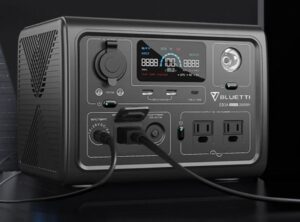




















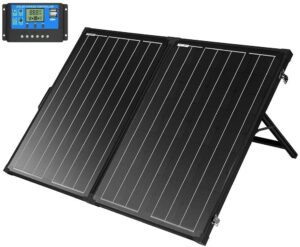









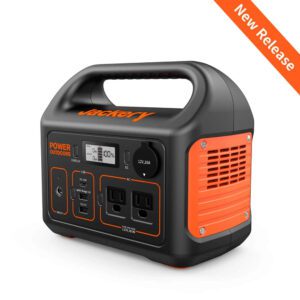


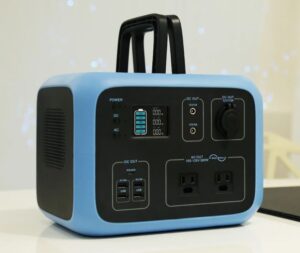





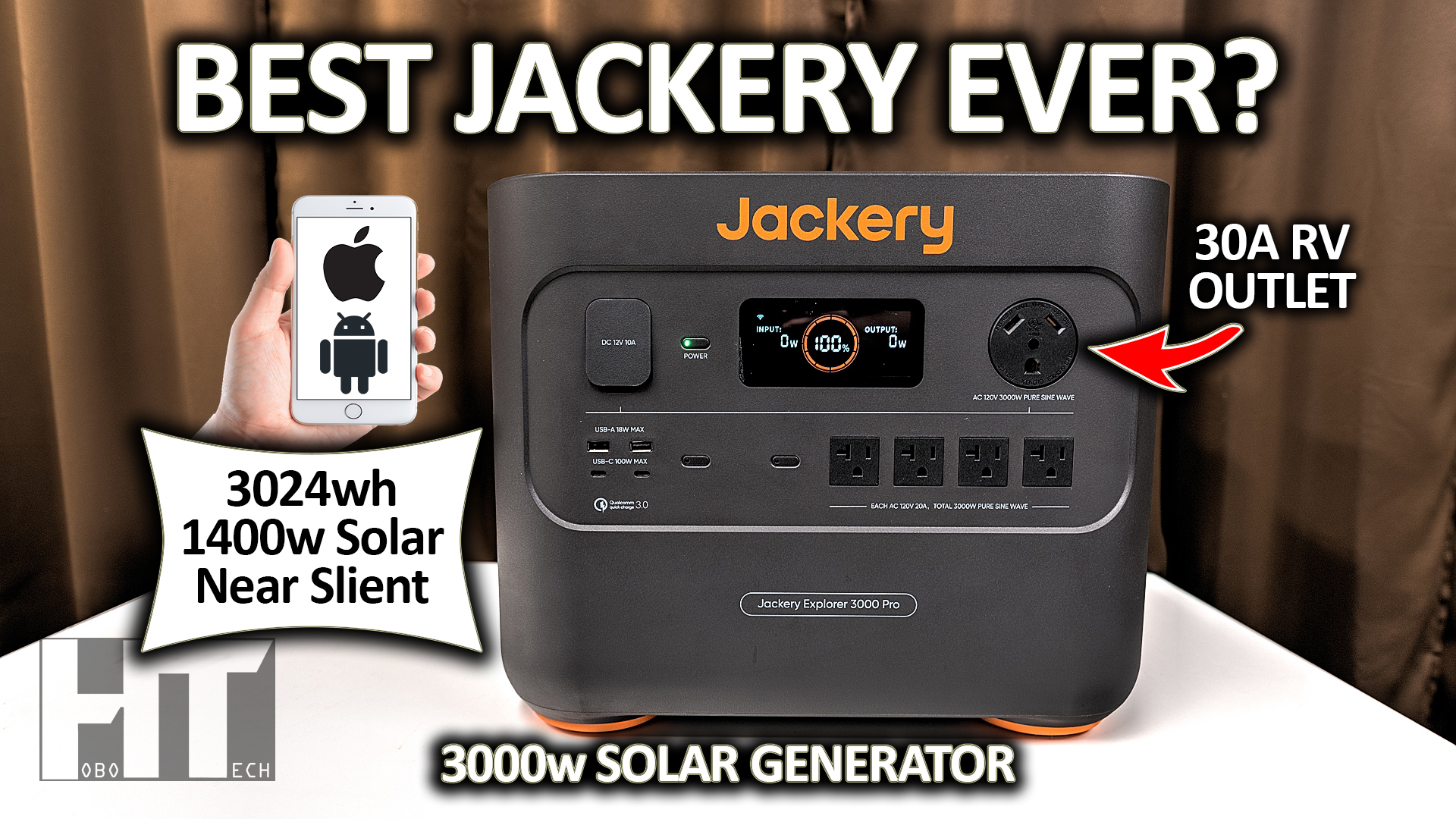
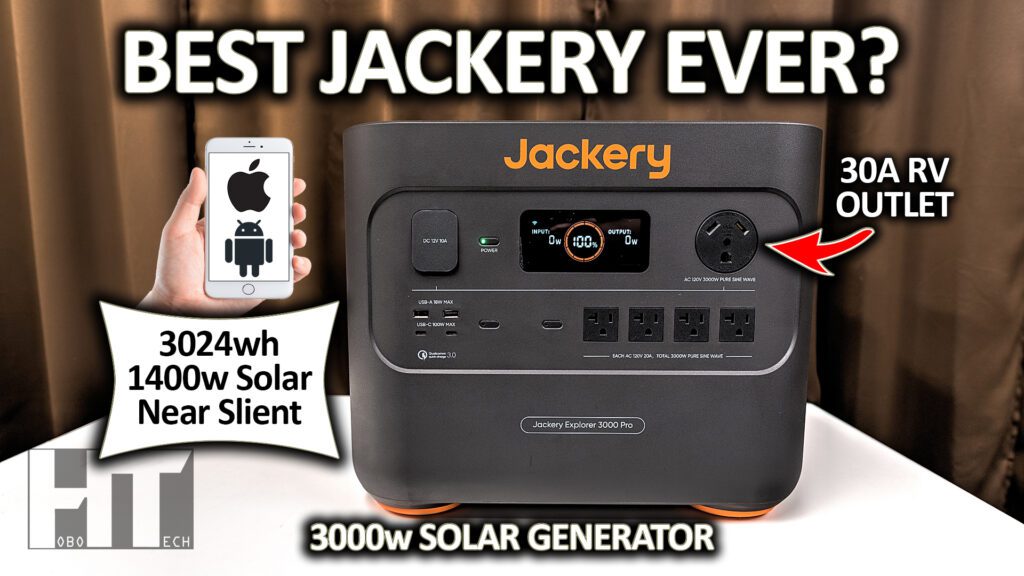
You must be logged in to post a comment.